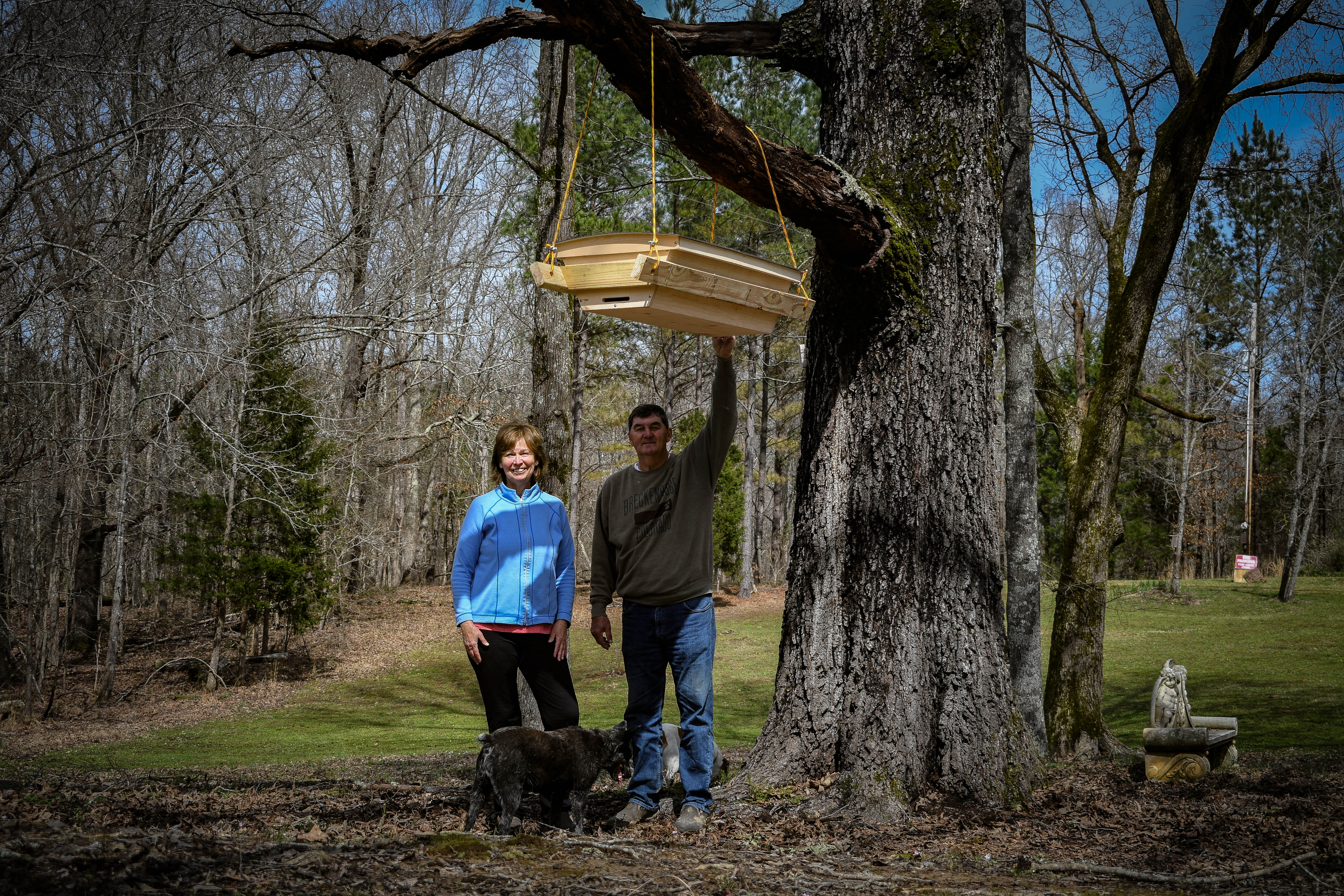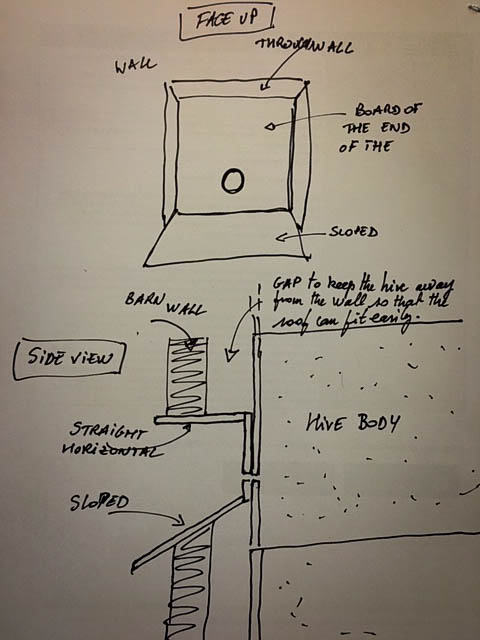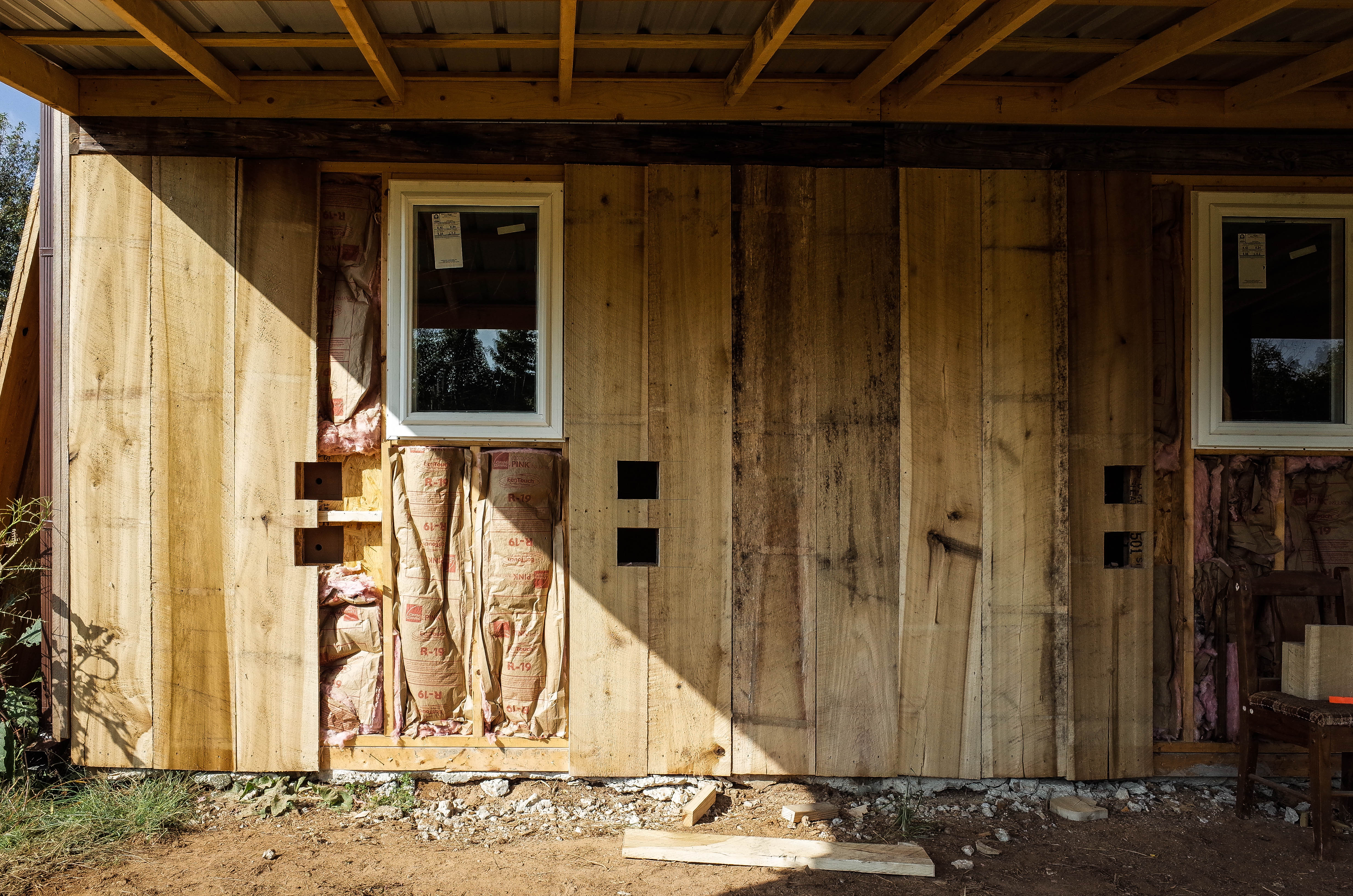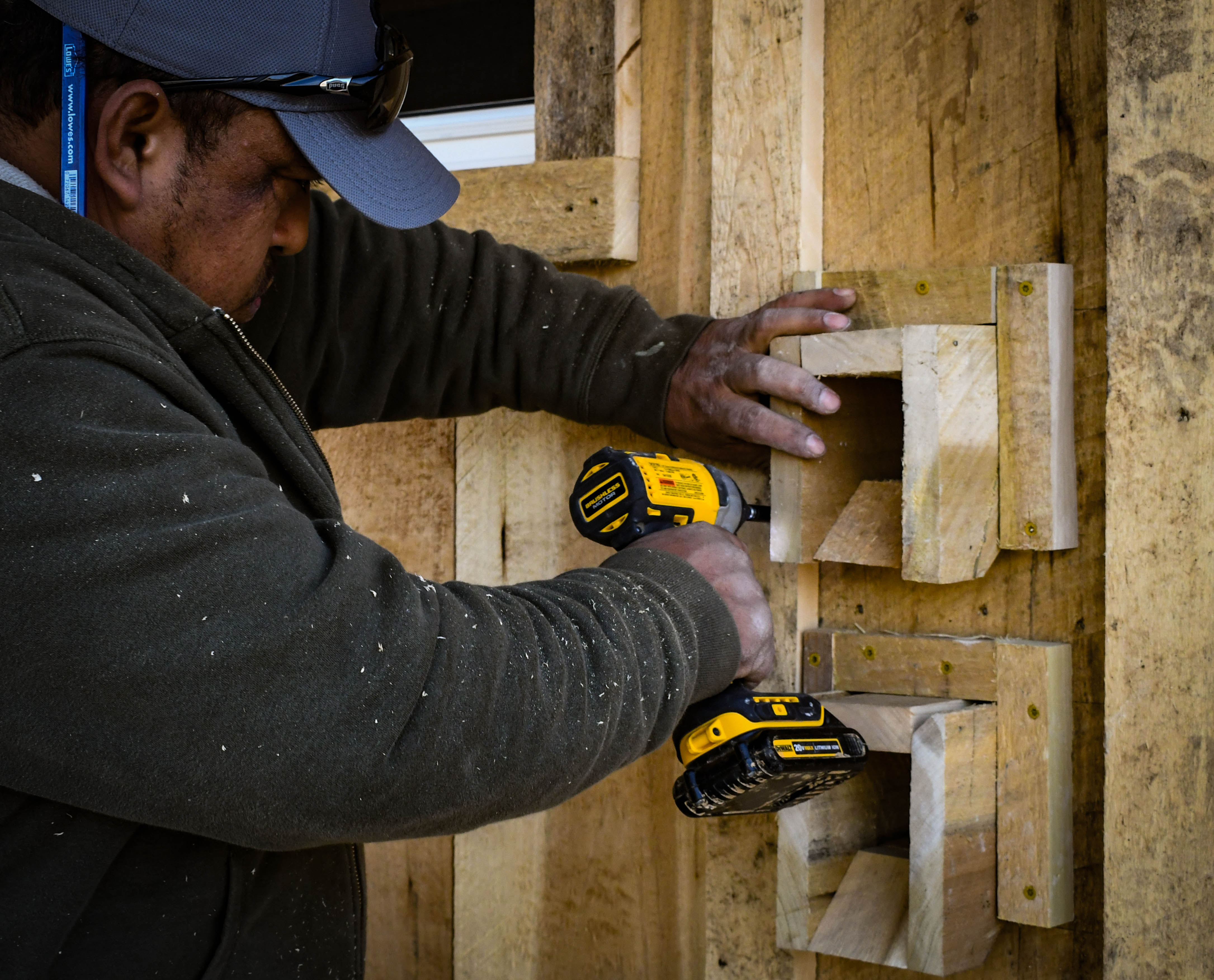The room for the langstroth hives is 30 feet long and close to 8 feet high. It faces the East and is prolonged by an additional roof to protect the wall from the rain and winds. The wall is insulated as is the rest of the room so that the amplitude of temperature is limited and its change is very slow, keeping an environment in which the temperature control at the brood does not require much energy. 3 windows allow some light inside the room. The room contains 6 langstroth hives the bees access through tunnels in the wall. There are two tunnels per hive, one per box, so 12 tunnels in total. The bees transit through these tunnels between the interior of the hive and the exterior where they fly off to their duties. The visitor in the room can hear the bees in their hives and can peak through windows in the hive body when they are uncovered, but the visitor is never in contact with the bees. This design was initially intended to limit the need to control the temperature by the bees but the practice found that it provides a room for visitors in which they can safely look into a hive and see the bees at work.
1- The initial idea of a bee hotel in my sketch book on my way back from Bavaria in August 2017
2- The tunnel idea is getting refined. The actual tunnel is actually pretty close to this idea. The bottom of the tunnel is flush with the body of the hive and the hole in the tunnel matches the hole in the hive.
3- Two sets of access holes on the two most Southern hives as the wall is built, the insulation and the additional roof are visible
4- The two sets of tunnels have been added on the finished wall
5- David finishes fixing the tunnels to be flush with the hive on the other side of the wall.
The hives are ten frame Langstroth hives of the usual dimension. They are made of spruce and present the following features:
1- the access is through two holes at 1/3 to the bottom of each brood box, the dimension of the tunnels flush with the box has been outlined around the access holes
2- the lower box is an insulation box with its bottom made of mesh and filled with cedar/oak mix shaving. The box provides insulation but also shelter for the micro flora and fauna of the hive (pseudo scorpions can be found hiding in the shaving for example), but also absorbs moisture. The two access holes at the bottom of the tunnels are visible above the box and will fit with the holes in the brood and stash box.
3- the second box is the brood box in which the queen is confined, the hive is in effect a one box brood hive
4- the queen excluder separating the brood box to the stash box
5- the stash/honey box is the third and top box
6- inside board
7- telescopic insulated roof
The six hives stand along the wall and the bees transit from the hive to outside through the tunnels in the wall. Each box displays windows covered by a blinder.
1- the hives with some blinders removed
2- the hives as they are set on each side of the windows.
The queen and the brood are confined in a single box. The box placed above it is separated by an excluder where the workers store honey for winter. I wanted the brood box to be rather small versus the usual Langstroth volume for several reasons.
1- The usual Langstroth hives with two boxes give too much space to the bees versus the cavities they chose in nature. The average volume is 45 liters in nature and the volume of one Langstroth box is close to 42 liters. Two boxes at 84 liters are on the real large side of a natural cavity maxing out in general at 60 liters. This being said I have seen bee colonies in above 100 liters volumes, so this is a gross generalization.
2- The local control of temperature at the brood level is easier in smaller volumes.
3- The varroa would kill very quickly in a smaller volume with as smaller colony and would limit the horizontal propagation to the other hives. This is especially valid in the bee barn set up where 6 hives are really close to each other. Abnormally close if it were in a natural environment.
4- The bees would swarm every year, here again interrupting the varroa cycle at the brood level, but also propagating the bees in a natural manner. The barn is a place where natural swarms from various locations of the area are being hived. They provide a diversified genetics and adapted bees to the locale. The swarms re-wild the area without any further intervention.
On May 1st 2019, only 3 hives are occupied. 3 more will be set as soon as I transfer some baited box swarms. I still wait for a couple of weeks to make sure that the swarms are brood bound prior I transfer the frames into their new home.
The video shows how the hives are set up and how the bees transit through the tunnel.























